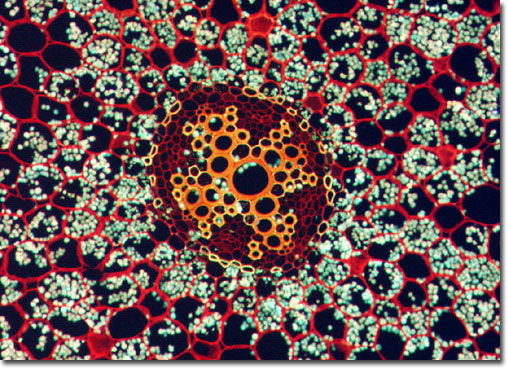|
Though the most familiar type of herbaceous stem is the upright structure frequently seen supporting common flowers, there are many different types. Some stems, like those of cucumber plants, lie prostrate on the ground, while others twine upward with the aid of tendrils. Horizontal stems that grow underground are known as rhizomes and are characteristic of a variety of flora, including the common iris. Stems that grow beneath the surface of the soil may also be found in an upright position. These short, fleshy structures are usually called tubers, but when they are enlarged with stored food the stems are known as corms.
|
